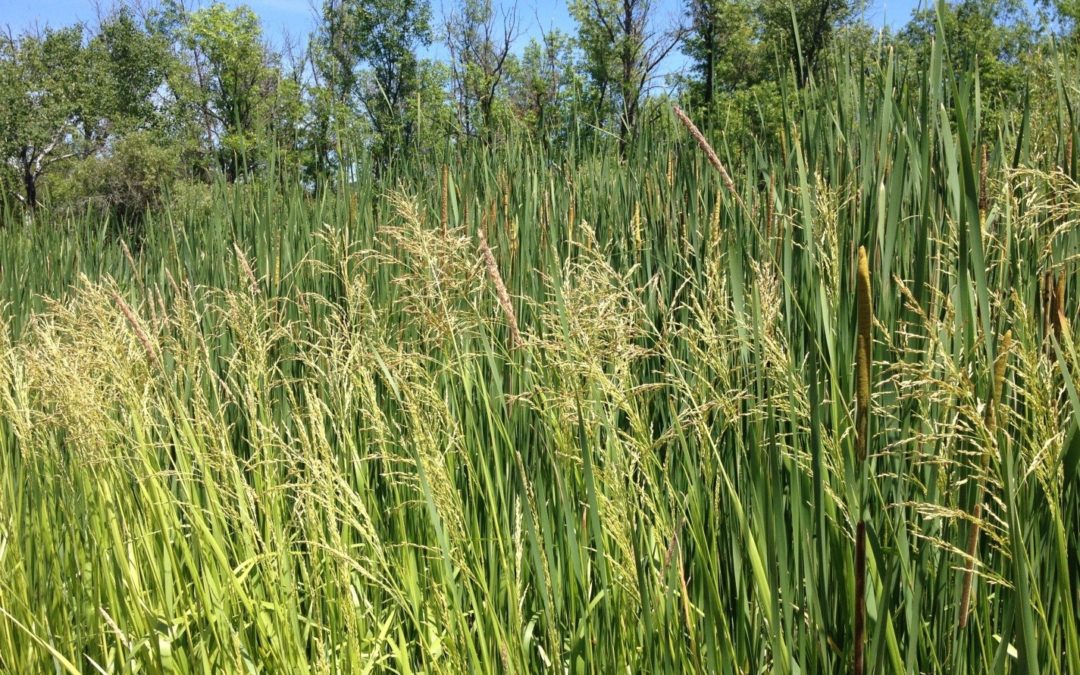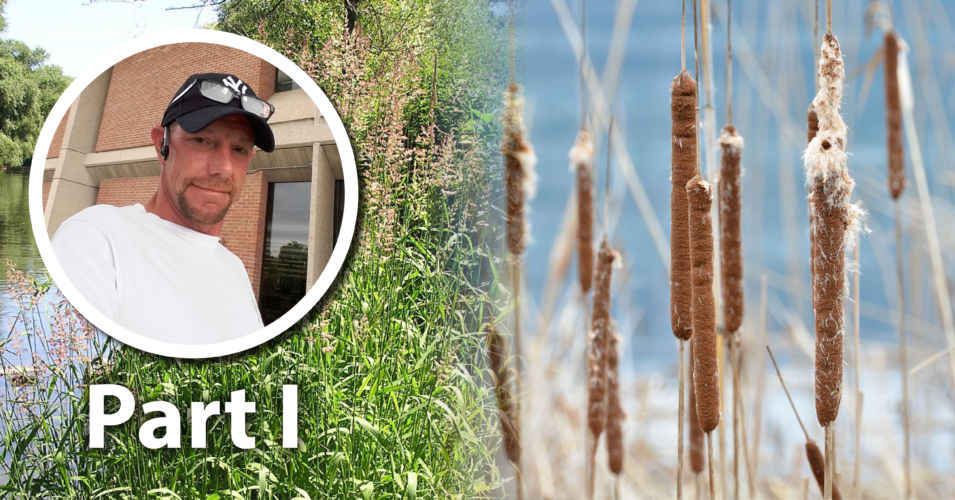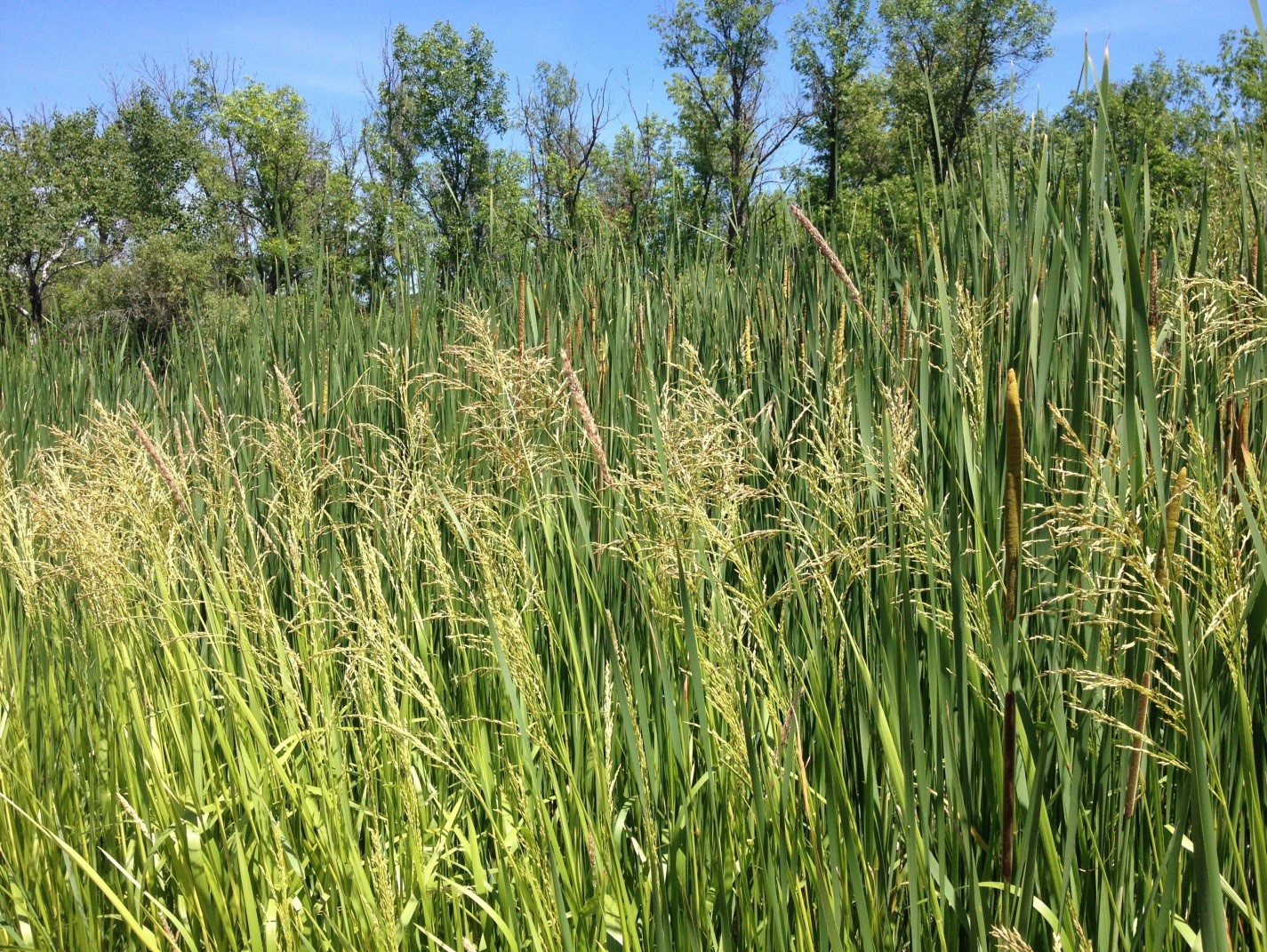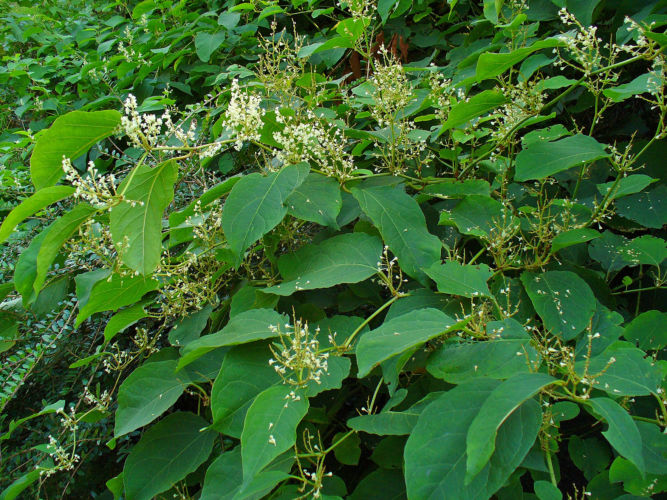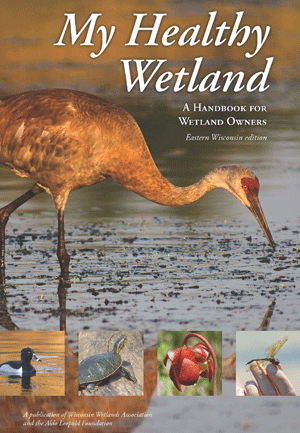Reed mannagrass (Glyceria maxima, also sometimes called rough or tall mannagrass) is an aggressive, weedy grass that grows in very wet places including marshes, streams, drainage ditches, and lake edges. It grows up to 8.5 feet tall, has wide leaf blades, and forms large, thick stands that crowd out native plants and damage habitat for fish. It is so aggressive that it has been seen to out-compete reed canarygrass!
Wisconsin does have a similar native species of mannagrass (Glyceria grandis), but it is much shorter, growing only up to 5 feet tall, has a much narrower leaf blade, and is found in small, sparse stands.
Watch out for this species and report it to Wisconsin DNR when you see it (details on how below). Try to avoid walking through areas with this plant since you can inadvertently spread the seeds on your boots and clothing. Broken plant parts can also float to new sites and re-sprout.
If you see a tall grass that looks like the one in the photo above, take a closer look at these characteristics:

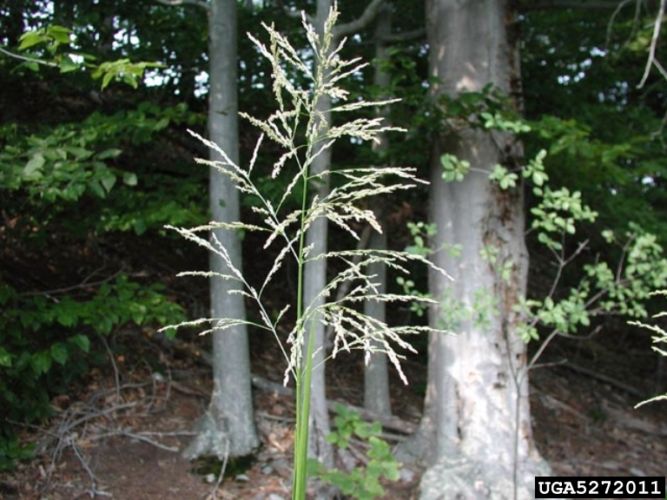
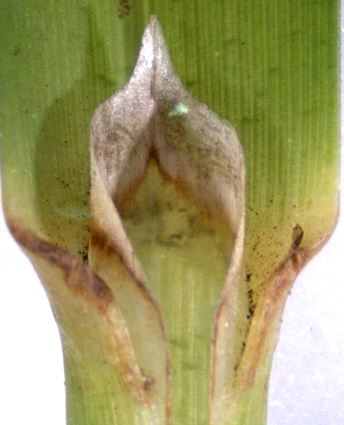
Get help confirming reed mannagrass and controlling it
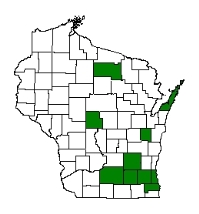
The counties highlighted in green are the Wisconsin counties where reed manna grass is suspected to have arrived.
If you suspect that the invasive reed mannagrass is growing in your wetland (or a wetland in your area), here’s how you can get help confirming that the plant is this wetland invader and get help controlling it.
First, take digital photos of the plant. Try to get photos of the flower or seed head, the width of the leaf blade (include a small ruler or a coin in the photo to show width), the ligule, and the connection between the leaves and the stem. Also take a photo of the plant in the habitat where you found it. Finally, it’s helpful if you can count the number of leaves on a typical stem.
Then send these photos (and the leaf count) to Jason Granberg at the Wisconsin Department of Natural Resources (preferably by email) for identification assistance. Be sure to include information about the location details. Email Jason at jason.granberg@wisconsin.gov. You can also call Jason at (608) 267-9868.
Once the DNR has confirmed that you have this invasive species on your land, you will find out about control options. The DNR has funding from the federal Great Lakes Restoration Initiative to conduct control efforts on properties where this invasive plan has been verified and where landowners have provided written consent.
Photos by Jason E. Granberg (Wisconsin DNR), Leslie J. Mehrhoff, University of Connecticut, and Bugwood.org.
Related Content
Wetland Coffee Break: Toward more effective invasive species management, Part 1
Invasive plant profile: Reed canary grass
Prioritizing invasive plant control, Part ll

